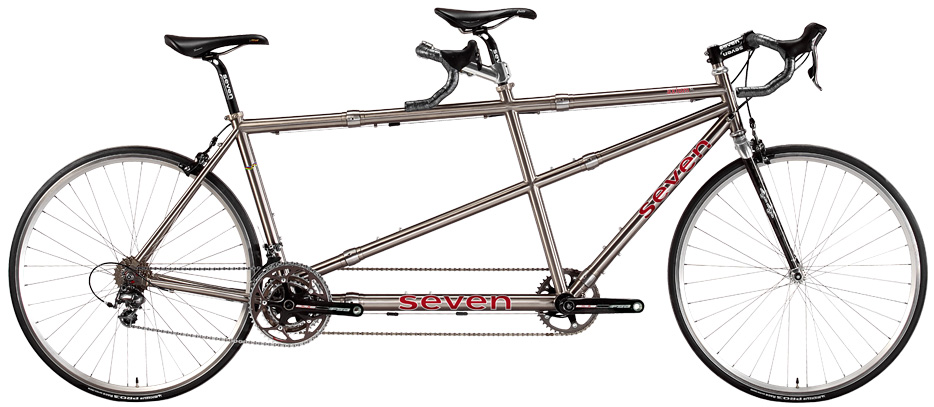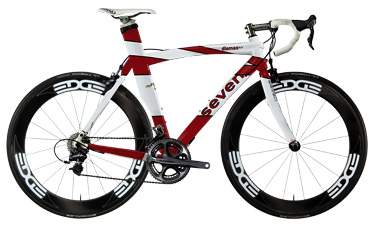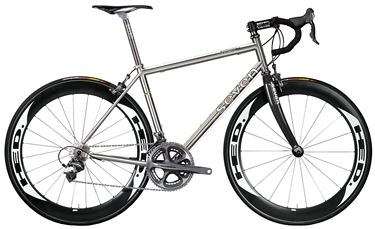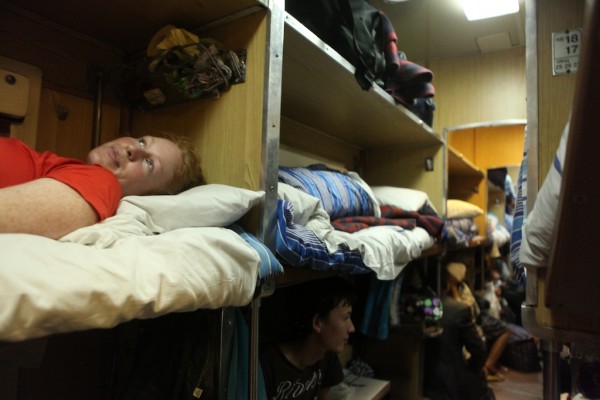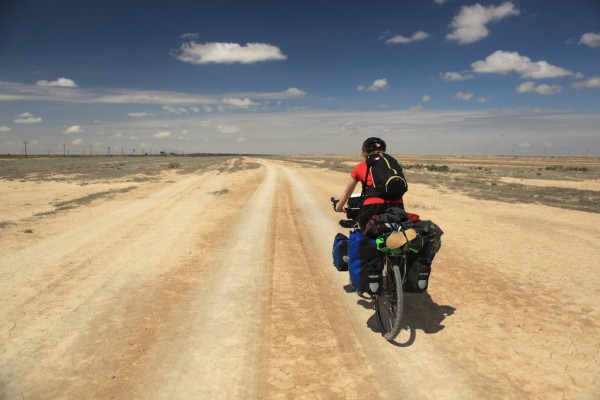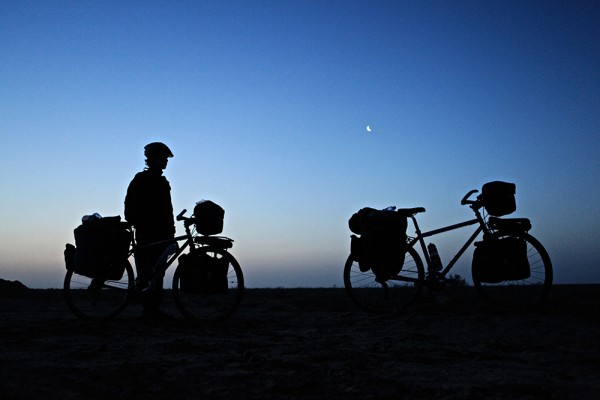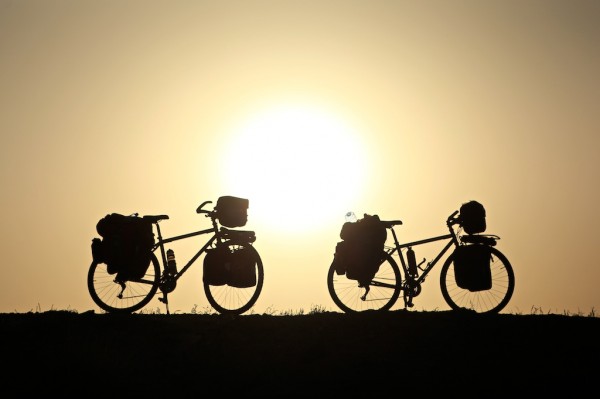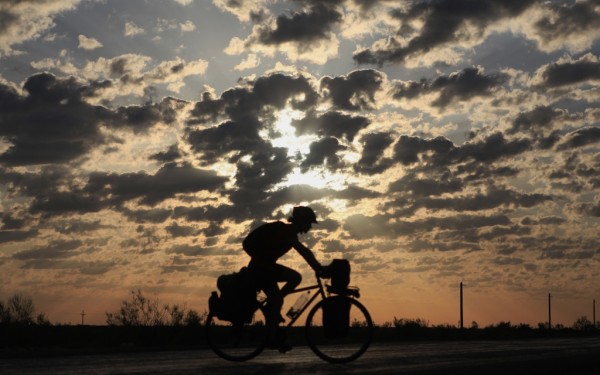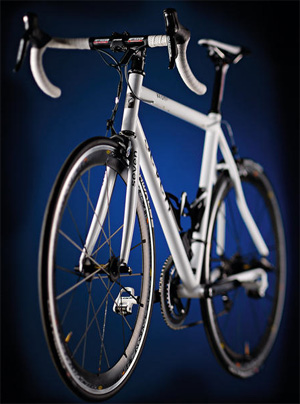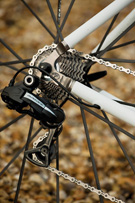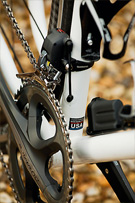By Bella English
On Black Friday, while the rest of us are recovering from our Thanksgiving feasts, watching football, or hitting the sales, Kathy Laska and her dad, Dave Wilson, will be doing a 6.2-mile ocean swim, followed by a 90-mile bike ride up a volcano on the Big Island of Hawaii.
The following day, they’ll jump on their bikes and do a 171-mile ride with a vertical climb totaling 8,600 feet.
The third day is merely a double marathon: They’ll run 52.4 miles.
Each day’s event must be completed in 12 hours or less.
Are they crazy, or what?
“That’s not an unreasonable question,” replies Wilson, 65.
It’s called the Ultraman World Championships, and only 38 people in the world are competing in the invitation-only event this weekend. Twenty of them are from the United States, including two from Massachusetts: Wilson and Laska, 38. There has never been another father-daughter team competing in the Ultraman, and Wilson is the oldest in this year’s event.
Laska, of Millis, and Wilson, of Brockton, have each done one prior Ultraman, though not together: He took part 10 years ago and she, two years ago. So they know all too well what they’re getting into.
“There are all kinds of bizarre races all over the world,” says Wilson, a wiry 5-foot-6. “The Ultraman is one of them. Fringe races, I call them.”
As in lunatic fringe?
“It’s very difficult to pretend to have a normal life,” laughs Wilson, a mechanical engineer. “We like these endurance races and they take a lot of training.”
For one peak training day, Laska started at 7:15 a.m. and finished at 8:45 that night – a 10-hour bike ride and an hourlong run.
On a recent day, father and daughter are relaxing in her den, wearing their shirts from QT2 Systems, the training firm they’ve hired to help them prepare. Their triathlon bikes – a Specialized for him, a Seven for her – stand nearby. A shopping bag contains several large Ziplocks filled with power bars and gels.
“I’ll be only the third 65-year-old they’ve ever had and my goal is to beat the others’ times,” says Wilson, obviously excited about sharing the event with his only child.
Neither Laska’s husband, Brian, nor her mother, Janet, are into the races, except to support their team. Ultraman requires each competitor to have a team of at least two people. Crew members will follow the swimmers in a kayak and the bikers and runners in a car, providing food, energy drinks, mechanical help, and moral support.
Wilson has a friend and two Hawaiian volunteers on his crew; Laska has her husband, mom, and a friend.
Fear is a great motivator, and to Wilson and Laska, that first day with its endless ocean swim followed by a long, steep bike ride is the most daunting.
“I was incredibly anxious two years ago,” says Laska, who works in biotech sales. “I was afraid of taking too much time for the swim and not leaving enough time for the bike.” She completed the swim in a little over four hours.
Swimming conditions from Kailua Bay to Keauhou Bay vary greatly. “It’s going to take at least four hours,” says Wilson, “and if currents are bad, longer.”
He adds: “We’re not swimmers. We’re runners.”
Laska, in fact, did not learn how to swim or ride a bicycle until five years ago, at age 33. Growing up in Brockton with asthma, she skipped swimming class, and with poor eyesight, she didn’t bike.
“I gave up,” says her dad. “I couldn’t teach her how to balance.”
At Stonehill College, Laska earned a second-degree black belt in karate. After college, she started running to lose weight. At 30, she completed her first marathon.
“You could do an Ironman,” her father told her, and he set about to see that she did.
Five years ago, he told a training friend that he wanted his daughter to learn to swim. Jennifer Higgins met Wilson 15 years earlier, when they both swam at Walden Pond, and she agreed to be there for Laska’s first swim session.
“She showed up with one of those SpongeBob kickboards,” says Higgins, laughing at the recollection. “She couldn’t even put her face in the water.”
Laska also took pool lessons. “The only person who could teach me was someone who taught little kids; it was a joke,” she says. “This is all I can do.” She raises both arms in an overhead stroke.
Bicycling was a similar story. “Her father had to teach her how to bike, and she would be so skittish, he would crack up,” says Higgins, a running coach and yoga instructor. “I wobbled all over the place,” agrees Laska.
That was in the spring; by the end of that summer, she had completed a triathlon. With her father’s encouragement, she signed up for an Ironman triathlon. “I knew that if I signed up for it, I’d have to do it,” she says. She did, and was hooked. She’s done six.
Wilson was a late bloomer, too. He was 40 when he did his first triathlon, but he’s made up for lost time. In the past 25 years, he has completed 16 Ironman one-day events: 2.4-mile swim, 122-mile bike ride, and 26.2-mile run. He has done several half-Ironman triathlons and numerous marathons. He was 55 when he signed up for the Ultraman, in 2001.
Two years ago, Wilson had major back surgery; it was six months before he could train again. The following year, he did an Ironman.
“People ask me all the time if Dave will ever give up working out and doing races and I tell them not in this lifetime,” says his wife, Janet. “It can be very frustrating at times, but Dave and Kathy are both happy doing it and that is what counts.”
It’s not just about the training, either. For the upcoming Ultraman, Laska and Wilson have been working with professional coaches who have written a workout plan for each, along with a special diet.
“There’s a science to it,” says Wilson. “The key to endurance events is pacing and fueling.”
Tim Snow of QT2 Systems is one of their coaches. He’s known Wilson since 1998. “It’s great to see him going just as strong now as he was then,” says Snow, a professional triathlete. When Laska entered the triathlon world, she showed the same “mental fortitude and positive attitude” as her dad, he says.
“I have done many, many races, of all distances all over the world, but the thought of an Ultraman makes me cringe,” says Snow. Some of their individual workout days have included three-hour swims, nine-hour bike rides and three-hour runs, he says.
“I haven’t raked the leaves or cleaned the gutters,” Wilson says. “There’s only so much time in a day.”
In Hawaii, on each of the three race days, they will awaken at 3 a.m. to carbo-load for the 6:30 start time. Their coaches have written out an hour-by-hour diet for the event: before, during, and after. Even during the swim, they are to slurp down a power gel every 45 minutes and imbibe two sports drinks – compliments of their kayak crew.
Post-race, according to the plan, they can have: “WHATEVER YOU WANT!”
Though the anxiety is high for Day 1, Day 3 presents another big challenge: running a double marathon in Hawaii’s steamy heat.
“The second day, you’re riding high up, so it’s a little cooler,” says Laska. “The third day you’re running on black top, there are no trees and it feels like 100 degrees.”
Two years ago, it took her 9 hours to run the 52.4 miles. Ten years ago, it took him 11 hours.
Then there’s the cost of it all: the coaching, the entry fee, the air fare for them and their crews, the hotel, the food. “Oh geez, I don’t even want to think about it,” says Wilson. “If we can get out at $15,000 for the both of us, we’ll be lucky.” He is paying about 75 percent of the cost, his daughter the remainder.
When it’s over, there won’t be much rest for the weary. Wilson and Laska will begin training for their next events: Mooseman in New Hampshire, a half Ironman, in the spring; and Lake Placid, an Ironman, in the summer. Bella English can be reached at english@globe.com.


